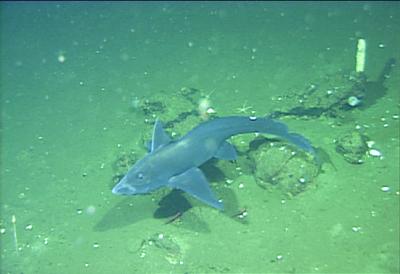
One of the evolutionary peculiarities of my favorite lab animal, the zebrafish, and of cypriniform fishes in general, is that they lack teeth. They lost them over 50 million years ago, and don't even form a dental lamina in development. So this photo of a cypriniform, Danionella dracula, gave me a bit of a start beyond just the nice fangs and the ghoulish name.
The story doesn't give much detail, but I'm going to have to look into this. Those are not true teeth, but spiny outgrowths of bone directly from the jaws.
